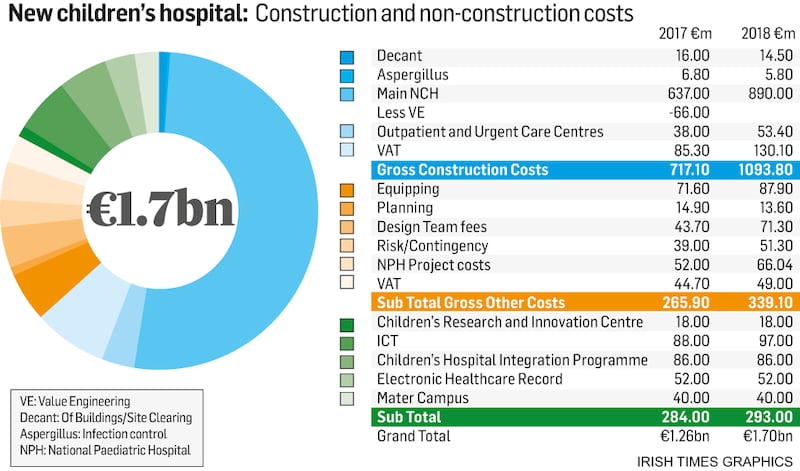In its 2011 financial accounts, Bam Contractors noted glumly that it had been another "difficult" year, where pricings for contracts in Ireland stayed "very tight and extremely competitive".
By 2013, Bam was altogether cheerier. “Ireland is currently an attractive place to do business . . . with the government PPP [public private partnership] stimulus package beginning to bring construction projects to the market, opportunities are there for activity to increase in the sector.”
The company has made good on that promise. Courtesy of deals with the State, or State-backed firms, schools, courthouses, roads, tunnels, medical facilities and even sewerage schemes have supplemented the firm’s steady flow of work from the private sector.
BAM is owned by Royal BAM group, a Dutch construction giant which had worldwide revenues of €6.6 billion in 2017.
Veteran builders say that its product is the best on offer. “They’re cutting edge contractors; if you have them on a project, it’s more likely to come in on time than anyone else,” one said. But they have also developed a reputation for pushing contracts – especially public contracts – to the absolute limit of the rules. “They’re taking full advantage of a poor system. They know the rulebook, they push it to the limit, because they can,” said a source. “If it’s allowed in the contract, they’ll f*cking chase it,” says another veteran builder.

There is also an asymmetry between the company, some insiders say, and the State, which may have reached its zenith at the national children’s hospital site. “This is the first big project the State has done for a long time . . . How many people working in the office of government procurement have the ability to stand up to a big international firm like Bam and say we’re not agreeing to these costs?”
Cost issues
Claims for higher costs are not uncommon, such as last year, when the company said an "arithmetical error" led to a €12 million underestimate on a major project in the port of Cork. The port company took a case in the Commercial Court over that issue. The Irish Times understands a higher price has been agreed after changes to the scope on the works, albeit significantly less than the €12 million originally requested. A second facility in Cork, the €70 million Marymount University Hospital and Hospice, was started in 2008.
Two sources have said cost issues came up early on, and frequently thereafter. It opened in 2011, but it wasn’t until 2013 that one of the organisations involved in the hospital could report “an amicable settlement with Bam contractors for our new facility in Curraheen” had been reached, with the financial assistance of the Health Service Executive.
Construction industry stalwarts such as Tom Parlon, chief executive of the Construction Industry Federation, are bullish on where the blame for the national children's hospital lies. "You price it on the basis of what is presented at the outset," Parlon argues. "But largely the design is not the full shilling. You discover quite a difference that gives you scope to get your own experts to evaluate the cost of the change, and eventually you come to an agreement."
Bam, of course, is not the only large infrastructure player working on the hospital project. Jones Group and Mercury Engineering are also involved.
Ireland is a country where cost overruns, especially on publicly funded works, are not unique to one project or one contractor. One source, who is currently developing a multimillion project with major contractors involved, says that keeping a handle on costs is a dynamic process – a constant game of cat and mouse. “You’re constantly looking,” he says, adding that he employs three engineers to monitor works on his project. “It’s like offence/defence . . . the reality is there’s a general malaise in the contracting sector, and that’s built up over a number of decades.” Bam did not respond to requests for comment.











